Echeveria vs Dudleya: Spot the Differences in these Succulent Twins
Alright succulent fans, it’s time for a botanical showdown! In this corner, we have the ever-popular Echeveria, and in the opposite corner, the lesser-known but equally fascinating Dudleya. At first glance, these two succulent genera might seem like identical twins, but trust me, there are some key differences that’ll have you saying, “Oh, I see!”
Let’s dig in!
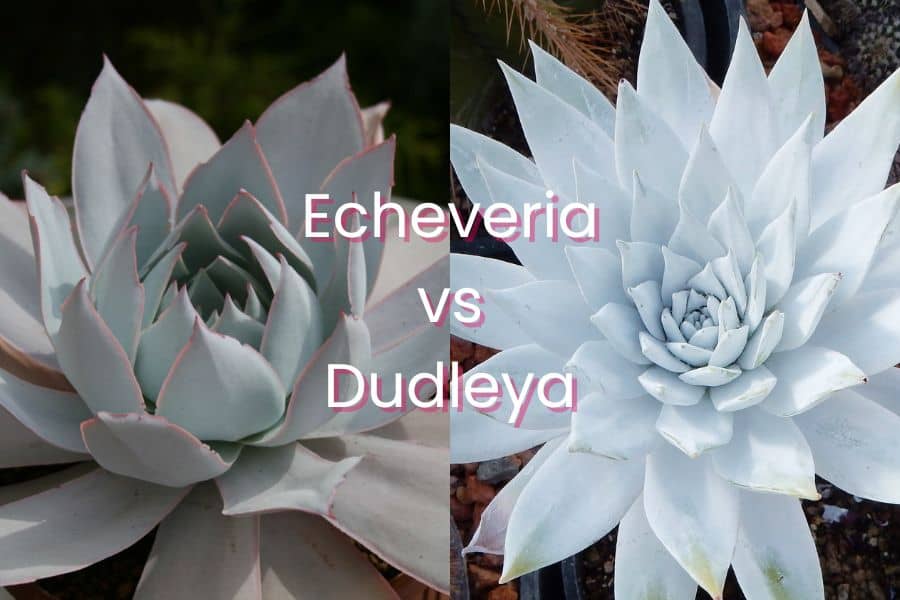
Contents
Echeveria vs Dudleya: Differences
1. Origins: A Tale of Two Homelands
While the Echeveria crew hails from the sun-drenched regions of Mexico, Central, and South America, the Dudleya gang calls parts of North America, like Arizona, New Mexico, and Nevada, their homeland. It’s like they’re succulent cousins from different sides of the family!
2. Appearance: Beauty is in the Eye of the Beholder
Sure, they both rock that signature rosette shape, but look closer, and you’ll notice some distinct differences. Echeverias tend to have shorter, chunkier leaves, while Dudleyas sport longer, more slender foliage. It’s like Echeveria is the muscular sibling, and Dudleya is the lean, athletic one.
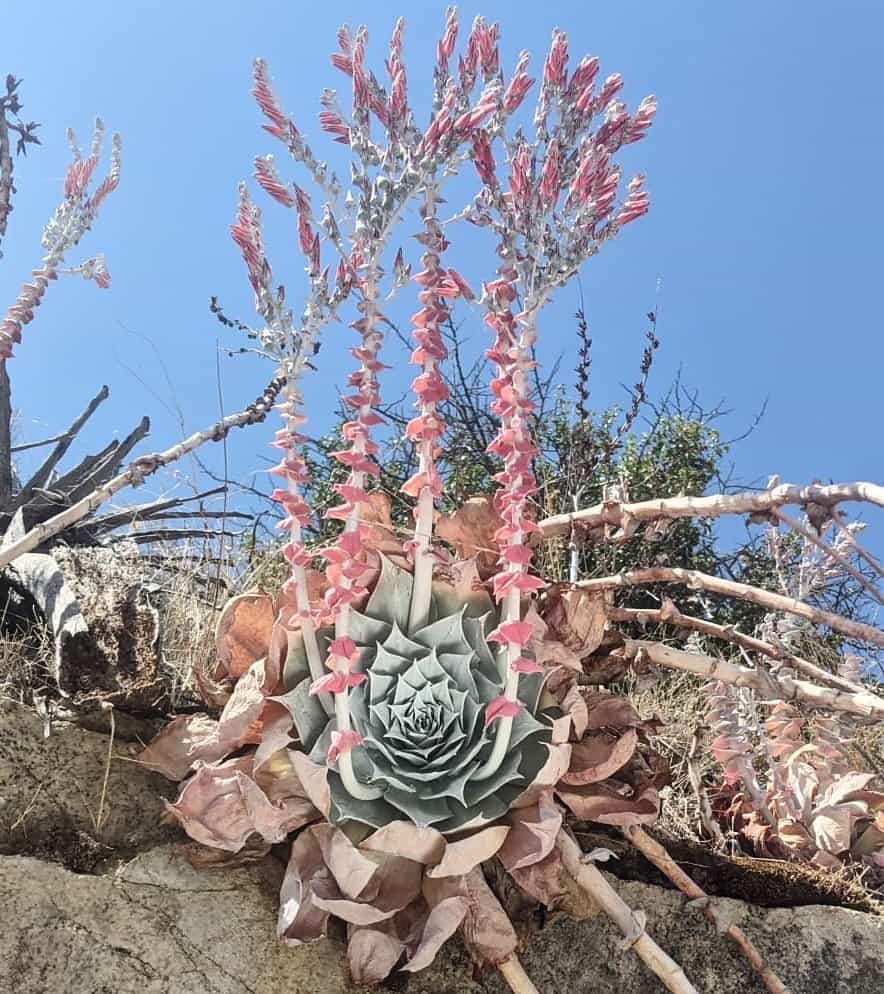
3. Habitat: A Clash of Terrains
Echeverias are semi-arid climate enthusiasts, thriving in rocky regions and handling drought like champs. Meanwhile, Dudleyas prefer even barer, more desert-like environments, making them the true wasteland warriors of the succulent world.
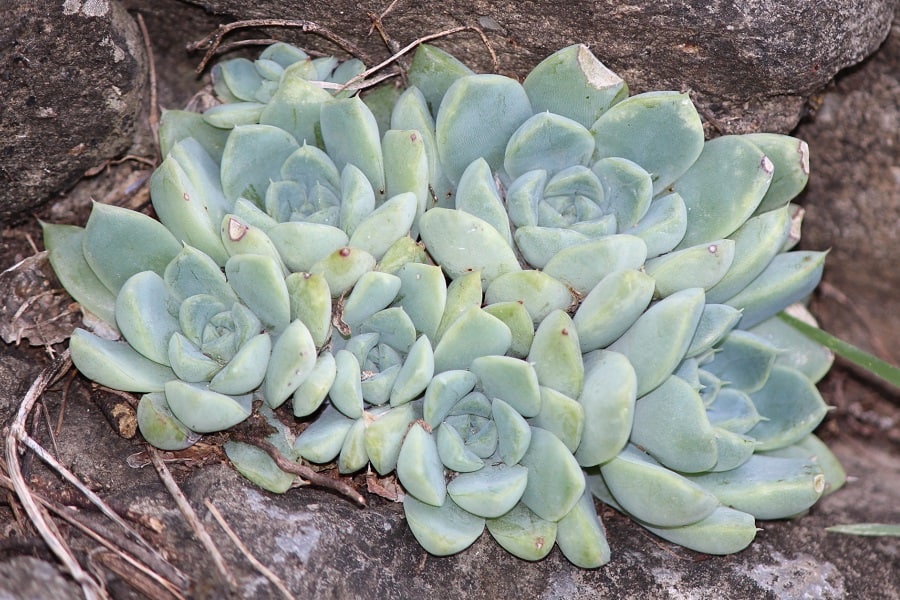
4. Lifespan: The Tortoise and the Hare
While Echeverias are like the hares of the succulent world, living a few decades before bowing out, Dudleyas are the tortoises, earning the nickname “liveforevers” for their ability to stick around for up to a century! Talk about some seriously stubborn succulents.
5. The Name Game: A Whole Succulent Squad
Echeverias are like the Kardashians of the succulent realm – there are just so many varieties and hybrids to keep track of! Dudleyas, on the other hand, are a bit more low-key, with fewer species to their name (though they’re no less fabulous).
Echeveria vs Dudleya: Similarities
Despite their differences, Echeverias and Dudleyas definitely have some shared succulent soul! For starters, their leaves both grow in gorgeous rosette patterns, creating a mesmerizing floral effect. It’s like they’re dual members of an exclusive succulent bloomers club.
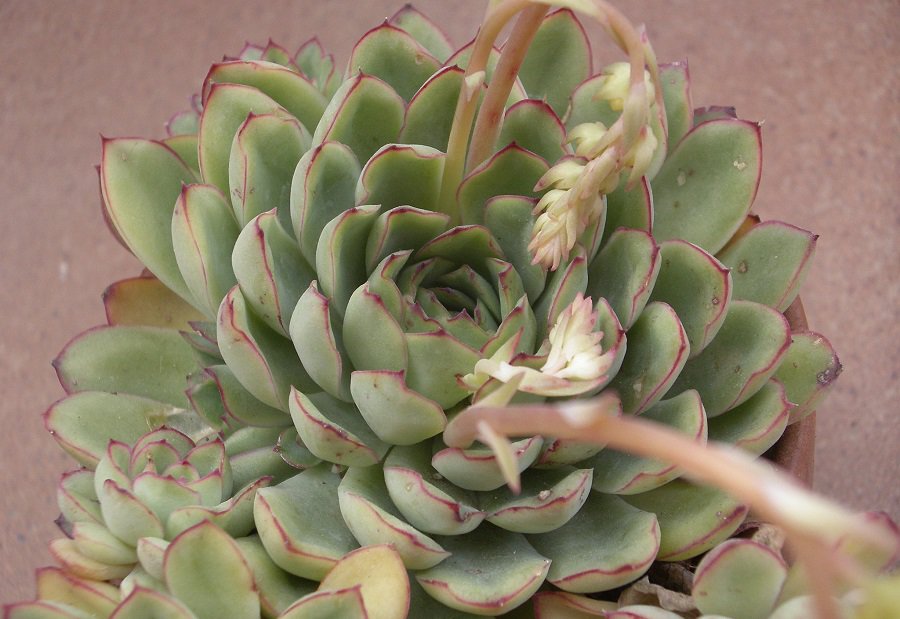
Their flowers are also total twins – dainty bell-shaped blooms in shades of white, pink, red and more. Can you imagine how stunning a mixed Echeveria-Dudleya flower bed would be? Pure succulent paradise!
And let’s not forget their incredible drought-tolerance skills. These plants can survive on very little water thanks to their thick, juicy leaves acting like tiny water reservoirs. It’s like they’ve cracked the code for thriving in the desert!
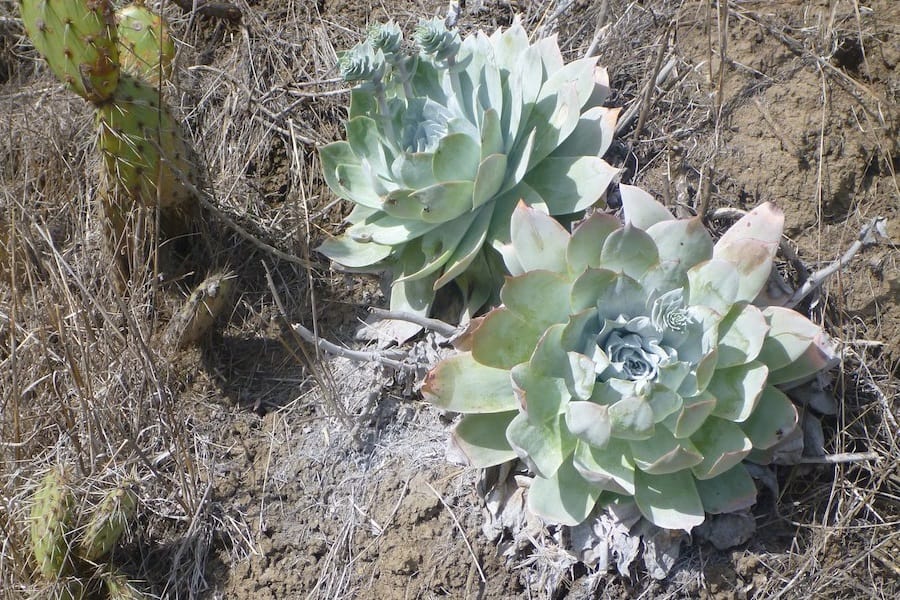
Related Posts:
Echeveria vs Graptoveria
Echeveria vs Aeonium
Echeveria vs Sempervivum
Echeveria vs Sedum
Care Tips: The Succulent Survival Guide
To keep these beauties looking their best, just follow a few simple steps:
- Sunlight: At least 6 hours of bright, direct sun per day is a must! They do well in the hot USDA zones 9-11.
- Soil: Well-draining soil is key to preventing root rot. Think cactus mix or add perlite.
- Water: Frequent waterings during the growing season, but take it easy in dormant times.
- Fertilizer: An occasional diluted liquid fertilizer in spring/summer will give them a nutrient boost.
- Pest patrol: Keep an eye out for mealybugs, aphids and their succulent-munching pals. Neem oil is your friend!
See, caring for these twins really isn’t that different after all! With a little TLC, you’ll be the proud parent of a thriving Echeveria-Dudleya succulent family.
